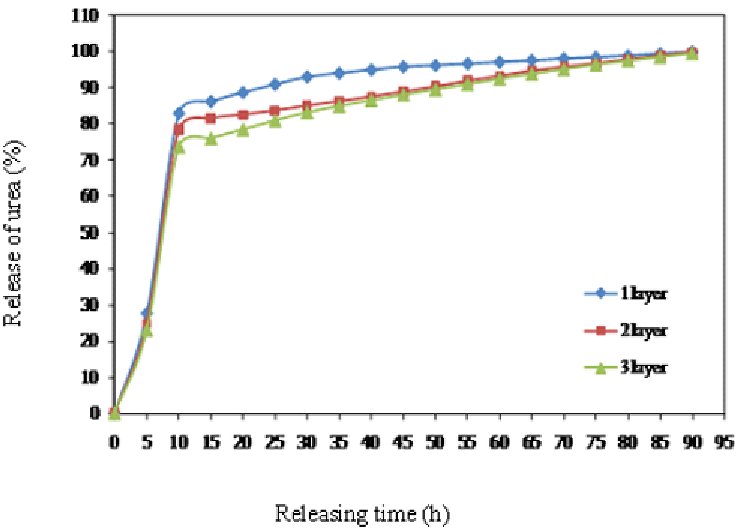Agriculture Reference
In-Depth Information
significantly altered after modification with CPAM due to the grafted copolymer as observed
from the TGA. The benefits of this absorbent are that it is highly stable, flexible and easy to
use in the environment. The effect of NR-g-CPAM on the rate of release of urea from the
beads coated with different layers is presented in Figure 32. It is obvious that the rate of urea
release was reduced significantly as a function of the NR-g-PAM coating, which is consistent
with the results of the swelling study. The NR-g-PAM film is very strong, rigid and hard to
swell, so the diffusion through this coating is the rate-limiting step for swelling and release
from the NR-g-CPAM. Using additional NR-g-CPAM layers on the capsule surface
prolonged the release. The cumulative urea released from the capsule with a 1 layer coating,
produced after 5, 10, 30 and 90 h immersion in aqueous medium, was 25, 72, 80 and 90%,
respectively. It must be noted that with an increase in the NR-g-CPAM coating, the capsule
matrix becomes denser resulting in a decrease in the rate of urea diffusion through the
swollen beads, especially the beads with the third NR-g-CPAM coating. The possible
mechanism for the release of urea from the capsule is displayed in Figure 33. There could be
many methods for the release of urea from the capsule e.g., erosion of the polymer, diffusion
and stress driven. After the beads were immersed in a water medium, the urea fertilizer was
diffused from the beads due to the swelling of the wall of the water barrier.
Figure 32. Relationship between the release rate of the urea fertiliserfertilizer and the release time from
the beads obtained from different coatings.



Search WWH ::

Custom Search